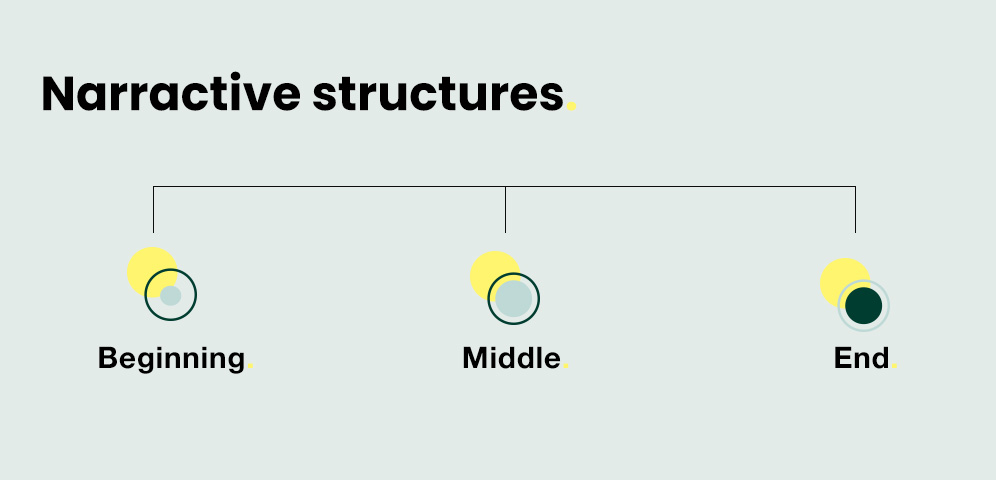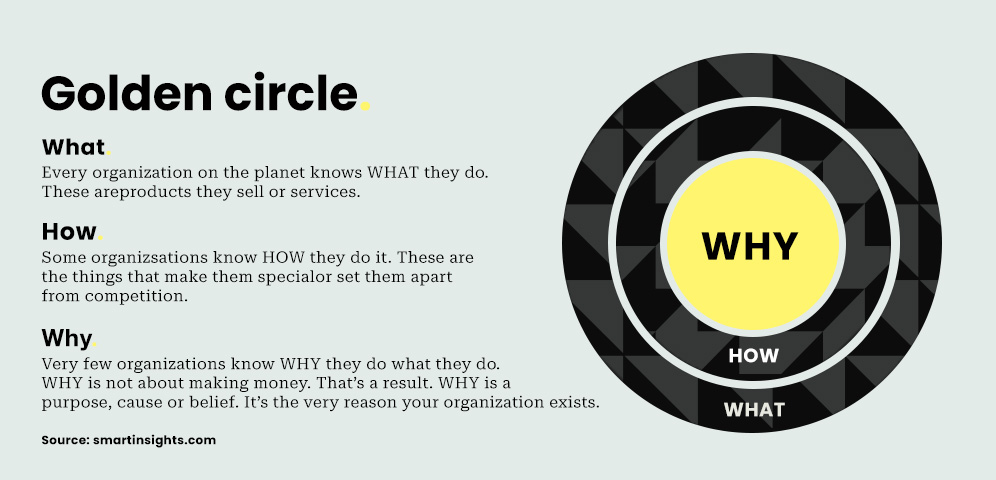
How storytelling helps reinforce your B2B brand positioning
It’s time for B2B organizations to move beyond just publishing content.
For years, B2C companies readily embraced the art of storytelling.
And it paid off.
Major consumer brands, such as Nike and Apple, owe a sizeable part of their success to their marketing campaigns, which conveyed powerful messages through relatable stories. These stories not only engage but also establish a strong brand position in the minds of consumers.
So why can’t the same be said about B2B organizations?
Even though 50% of B2B buyers are more likely to purchase if they feel an emotional connection with a brand, the vast majority of marketers are still suffering from a ‘creativity confidence crisis’.
According to research from LinkedIn, B2B marketing leaders in the UK have the lowest confidence in their companies’ abilities to produce creative campaigns (although this is slowly changing).
If you’re looking to learn about the benefits of B2B storytelling and pick up some techniques you can incorporate into your marketing strategy, read on…
Why is storytelling important for B2B companies?
Stories bring a brand to life, creating an emotional connection with its audience. This emotional bond is a cornerstone of effective brand positioning.
Here are a few reasons why CMOs should weave storytelling into their marketing materials.
1. Improved content marketing results
According to Search Engine Watch, storytelling can improve your conversion rates by up to 30%. This is because stories are a very effective vehicle for organizations to demonstrate their understanding of customer pain points.
2. Achieve clarity and consistency in your positioning
A well-crafted narrative provides clarity and consistency to a brand’s message. When B2B companies use storytelling to articulate their unique value proposition, it helps position their brand more clearly in the market, making it easier for potential buyers to understand and remember.
3. Differentiation
In a crowded B2B landscape, differentiation is key. Even though facts can be very persuasive when you’re promoting your product (especially in a business-to-business context), stories are ultimately what people resonate with.
In fact, in a study conducted by Stanford professor Chip Heath, 63% of participants tested could remember stories – but only 5% could remember a single statistic.
Storytelling allows brands to highlight what makes them unique. By sharing authentic stories about their mission, values, and successes, B2B companies can carve out a distinctive position in the minds of their target audience.
4. A more ‘human’ brand
Storytelling humanizes a brand, making it more relatable and approachable. This is crucial for B2B companies, where the buying process often involves multiple stakeholders. A brand that tells compelling stories can create a sense of familiarity and trustworthiness, which are critical for influencing purchasing decisions.
By telling a convincing story about how your team solves problems, you can engage your audience and foster brand loyalty much more easily.
What are some key storytelling techniques?
Narrative structures
Stories give people a framework to make sense of the world around them (and yes, this also applies to B2B decision-makers).
For a story to be effective, it needs a structure. One that’s compelling and easy to follow.
This means there needs to be a clear beginning, middle, and end.

It’s common to follow a three-act structure. The first act is the setup, which is where you set the scene and provide some basic context (who, what, where, when, why?).
Then comes the second act, where the character experiences a series of conflicts. If the character is your customer, there might be day-to-day challenges that prevent them from performing their job more effectively or efficiently.
In the final act, all conflicts are resolved. This is the time to present your brand, product or service as the solution to their problem.
You can, of course, deviate from this structure. For example, you might want to add a short ‘abstract’ at the very beginning to give readers an idea of what the story is about. You can also provide a closing note to the narrative for emphasis. This is called a coda.
How should I use this technique?
The ‘About’ page on your website is the perfect place to make good use of narrative structures. Instead of dull descriptions accompanied by a company timeline, create a compelling story that shares insight into your company’s origins, its achievements/obstacles, and where your organization is at now.
Show, don’t tell
This age-old literary technique isn’t just appropriate for fictional books; it’s essential for marketing content.
If you’re talking about an existing customer, make sure to include their quotes. B2B buyers can be naturally skeptical – so the more specific you are, the better.
Also, instead of simply stating that your product or service helps your target customers, bring your B2B communications strategy to life by supporting your claims with clear examples, success stories, and proof points.
That said, this doesn’t mean you should overwhelm your readers with too many facts and statistics, either.
You should always use facts and statistics to help you tell a story – not the other way around.
Even science agrees. Cognitive psychologist Jerome Brunner suggests that we’re 22 times more likely to remember a fact when it’s wrapped inside a story.
How should I use this technique?
Your landing pages are very important pages on your website because they allow you to target your audience and increase conversions by offering something of value (such as a free product demo).
You can put this ‘show, don’t tell’ technique to practice by highlighting what sort of results a customer can expect from using your product. For example, you can include a savings calculator and demonstrate the results in the form of a story.
Make your customers the ‘hero’
Most stories have a hero. Someone who triumphs over adversity and is rewarded for their accomplishments.
Some companies, understandably, try to make themselves the hero in every story they tell. After all, as a marketer yourself, that’s probably how you want people to remember your brand or product.
This is a mistake! Remember that your B2B buyers work in businesses, too. They have their own brands, products, and solutions. So they definitely won’t want to hear about a story that only revolves around you.
Structure your stories in a way that makes your target persona the centre of the narrative – and position your brand as the mentor that will help them overcome their problems (and their customers’ problems).
This will let them form a much stronger emotional connection with your story.
How should I use this technique?
Case studies are another place where your storytelling can come to life. But the way you frame your story is key.
If your case study subject is the founder of a tech company (and you’re a cloud services provider, for example), you don’t want to say ‘our product improved productivity by 20%’. The better way would be to say: ‘X company managed to do XYZ using our product’.
Establish yourself as the underdog
As mentioned earlier, most of your storytelling should revolve around who matters most: your target personas. But that doesn’t mean you can’t make your company stand out.
One effective storytelling technique to consider is to establish your brand as the underdog.
The benefits of this technique shouldn’t be underestimated. Framing yourself as the less-established player in your market can affect your buyers’ decision-making in subtle but powerful ways.
In fact, in a study conducted by Harvard Business Review, 71% of participants preferred brands with an underdog brand story over brands that don’t.
Still, it’s worth noting that underdog positioning isn’t suitable for all brands. Historic, established firms should steer clear of it. Otherwise, people may have a hard time believing your claims.
However, if you’re a challenger brand with an ambition to disrupt the market, leveraging an underdog narrative can be a very powerful storytelling tool.
How should I use this technique?
Many B2B organizations publish positioning eGuides. They inform their reader about specific business challenges and how to solve them. But more importantly, they’re designed to help you raise awareness of your brand’s position in the market. This is where you can weave in elements of your underdog story.
Declare a mission
By ‘mission’, I’m not necessarily talking about a corporate social responsibility mission – I mean a core purpose your organization actively lives by every day.
For example, if you’re a B2B data analytics company, your mission might be to eliminate data silos around the world and bring businesses closer to their data.
In your customers’ eyes, having a mission elevates you above others. According to business author Simon Sinek, the most successful businesses are able to communicate their ‘why’ – their very core belief and raison-d’être.

In his Golden Circle model, Sinek proposes that your brand messages should lead with ‘why’, not ‘how’ or ‘what’.
He theorizes that communicating the passion behind the ‘why’ is a way to engage with the audience’s limbic brain. This is the part of our anatomy that processes feelings such as trust and loyalty, as well as decision-making.
In contrast, talking about the ‘what’ only engages their neocortex – the rational part of our brains.
How should I use this technique?
Storytelling doesn’t only apply to external branding. You can also incorporate it into your internal branding strategy.
You can use this storytelling technique to inform your mission statement, which should inspire them and provide a sense of purpose.
By declaring an overall purpose and articulating a differentiated value proposition, your employees (not just your customers) can emotionally connect with your brand.
What are some examples of B2B storytelling?
Microsoft
Microsoft is one of the biggest advocates in the world when it comes to using storytelling as a brand-building tactic.
In fact, the company launched an online platform called Microsoft Story Labs, which is dedicated to showcasing employees from all departments (from researchers to developers to artists) and highlighting their success stories.
By providing in-depth profiles of the people behind this massive corporation, Microsoft humanized its brand and positioned itself as a place where unique and gifted individuals work.
Google Ads
An excellent example of making your target audience the hero is Google Ads’ Adwords Stories campaign. This video series highlighted owners from local small-to-medium businesses, who all shared stories about how they got to where they are today.
This video, in particular, illustrates how Berwick Shellfish managed to triple its sales using Google Ads. Notice how Google only plays a tangential role in this.
Cisco
Most of Cisco’s brand messages revolve around the future. But one major exception was the company’s multi-channel ‘Never Better’ campaign, which emphasized the idea that there has never been a better time for organizations to digitize, no matter the industry.
A highlight of this campaign is the skilful storytelling in Cisco’s advert (starring Ewan McGregor).
In the advert, McGregor congratulates humankind and tells a story about the history of human accomplishments as he visits various organizations around the world, allowing the viewer to insert themselves into the story.
What next?
Stories are the oldest form of mass communication – we’re hardwired to resonate with them.
B2C companies have long been able to use them to connect with customers. And although B2B marketers face a different set of challenges (i.e. the need to influence business decision-makers by appealing to their logic), there’s still a largely unseized opportunity to engage with buyers’ emotions.
For this reason, simply publishing good content isn’t enough. B2B organizations should leverage the power of storytelling.
But before you do this, you must first know what your brand story should be.
Download our playbook to find out what you need to consider when creating one, and learn why it’s a key component of a winning brand positioning strategy.
This post has been updated on June 17th, 2024. Originally published: September 1st, 2022
Read the latest positioning trends and insights.
Tap into our brand and product positioning, storytelling, and creative expertise to inspire your next strategic move.


